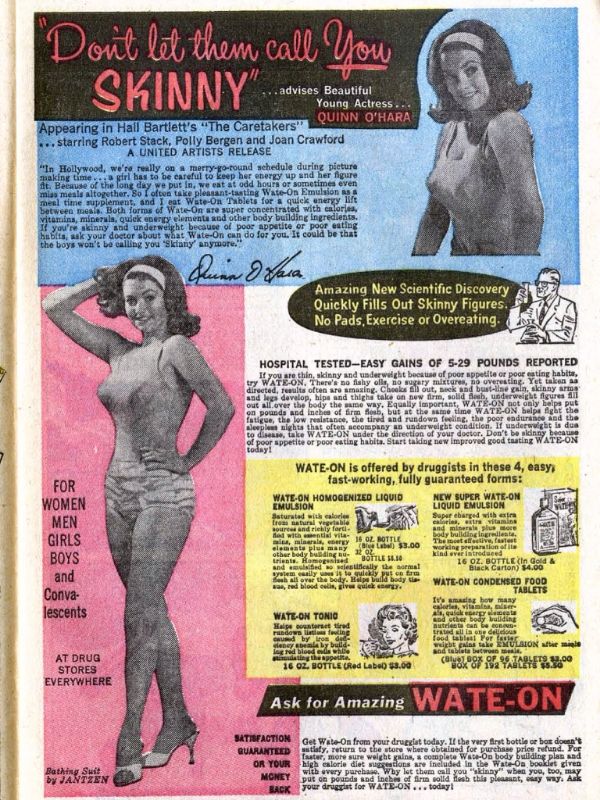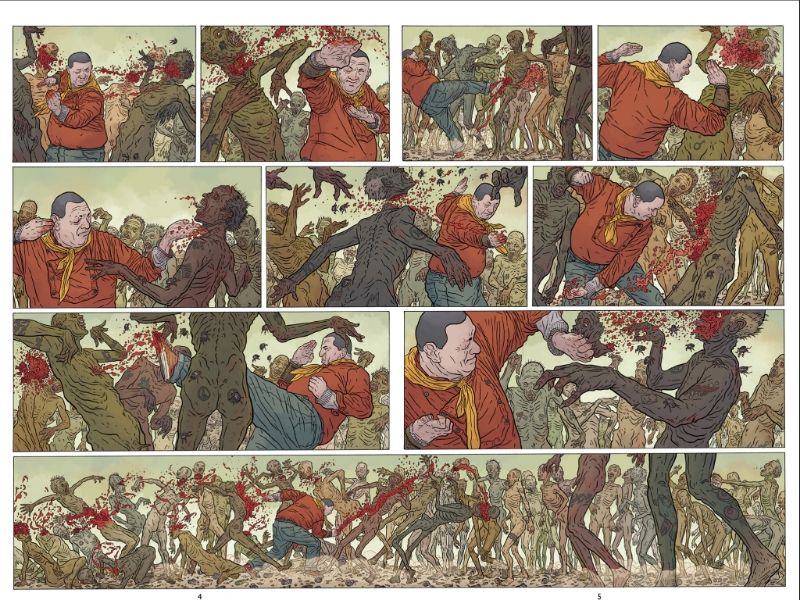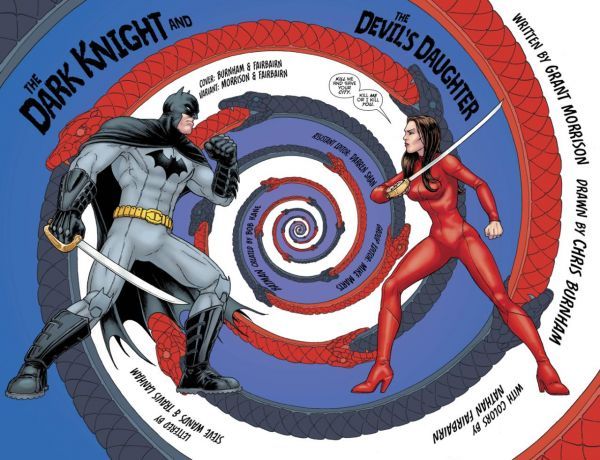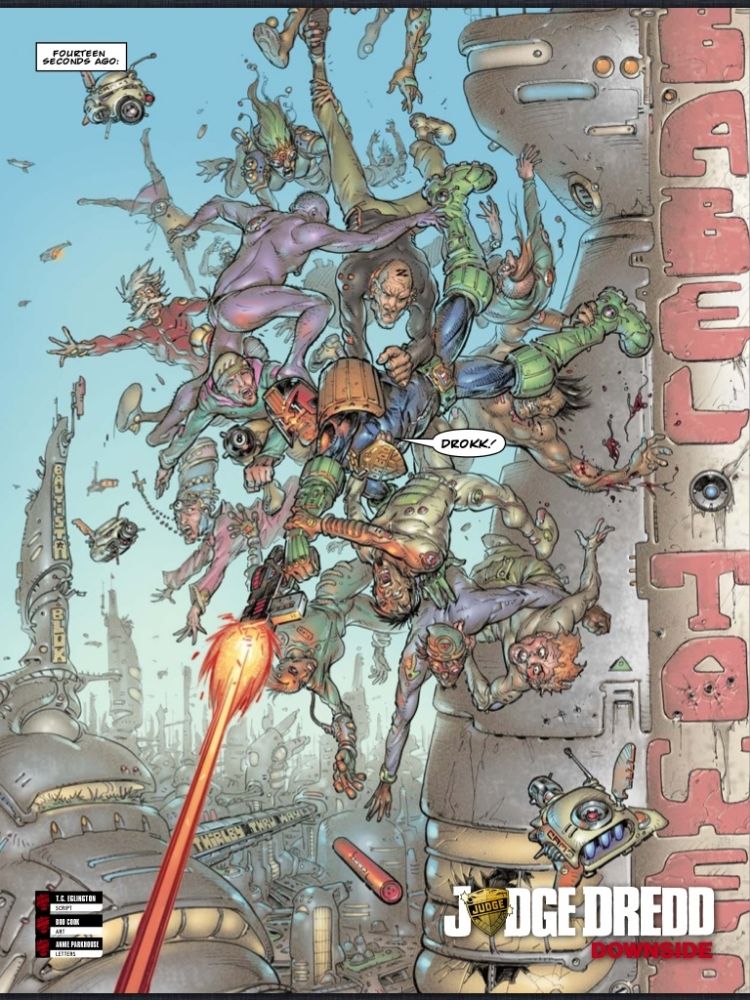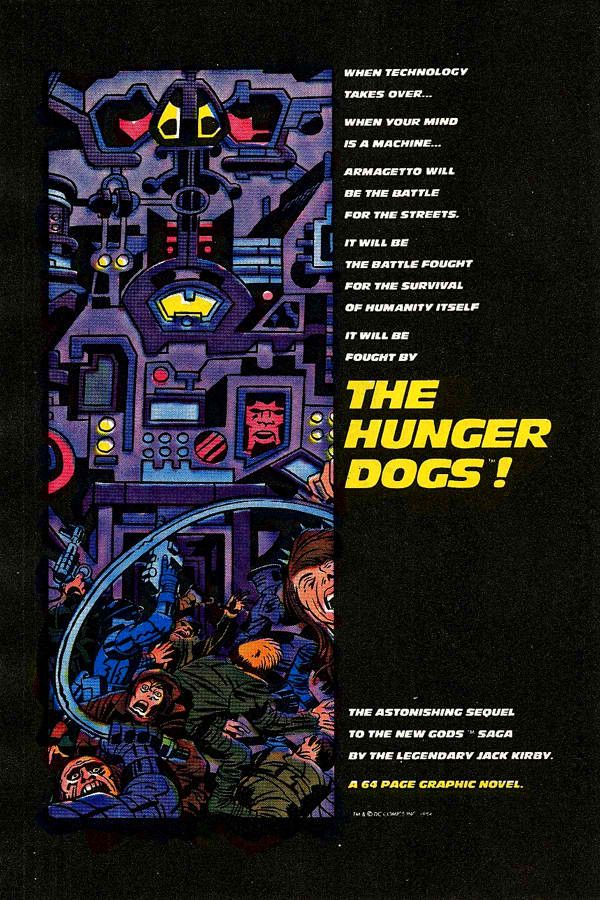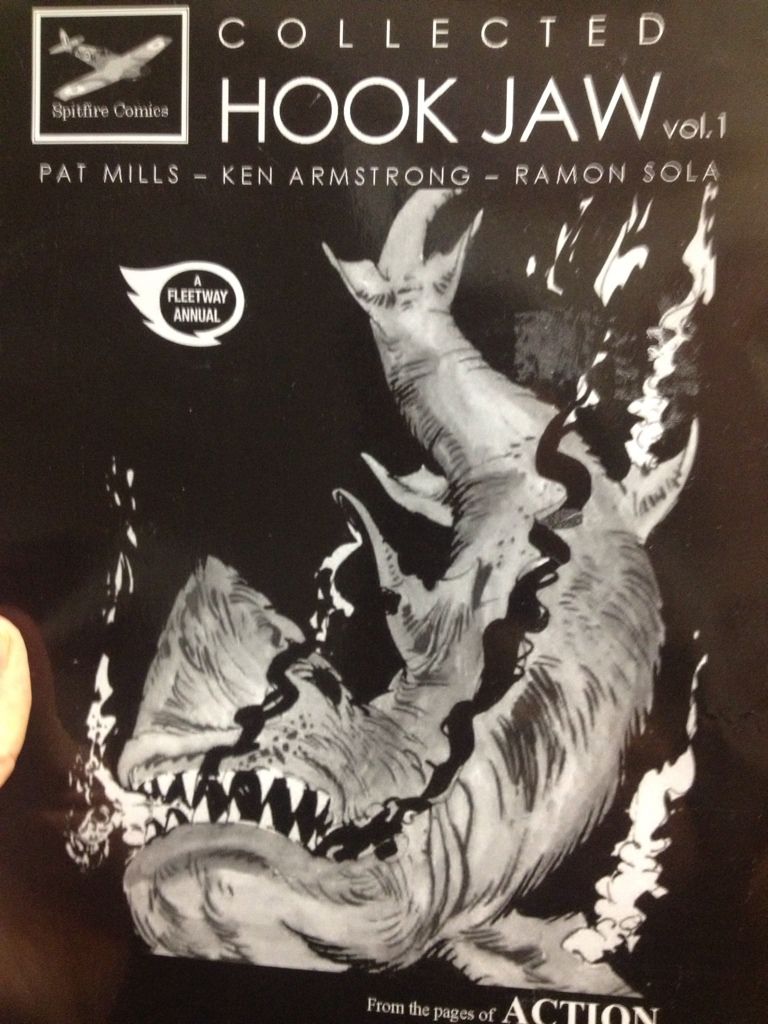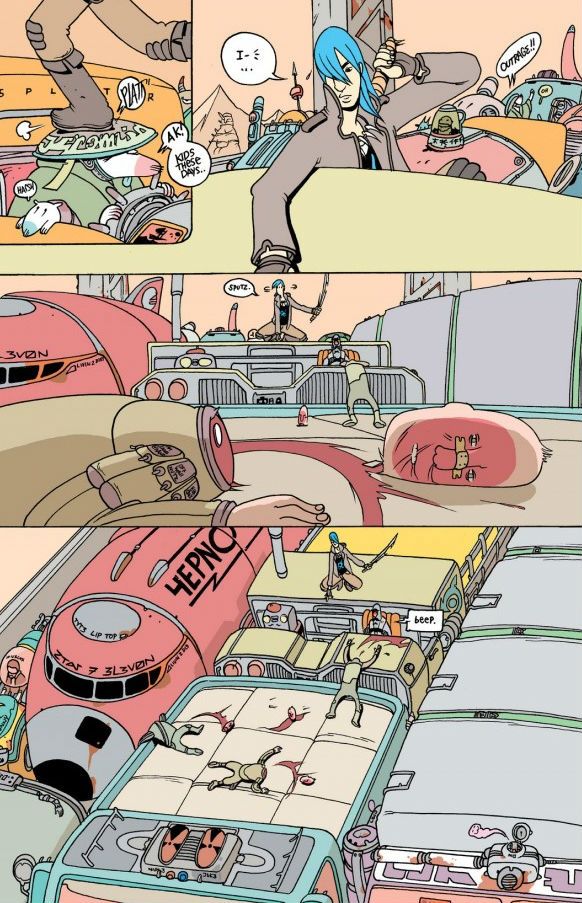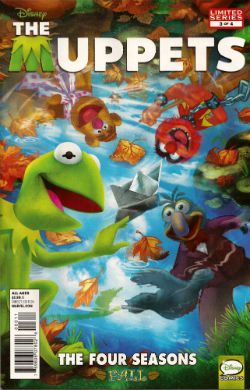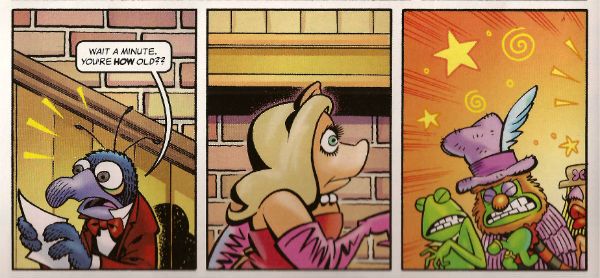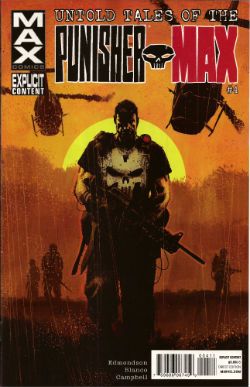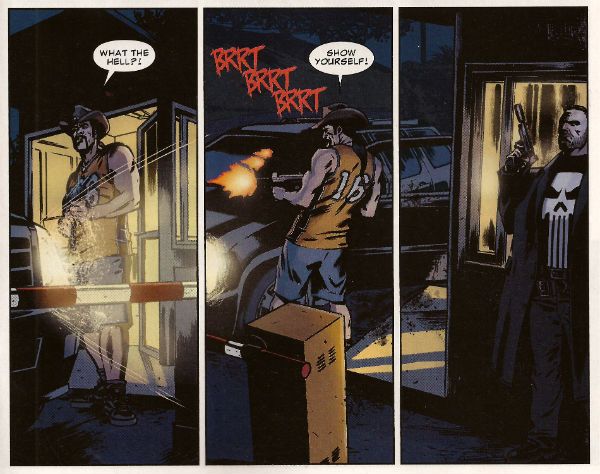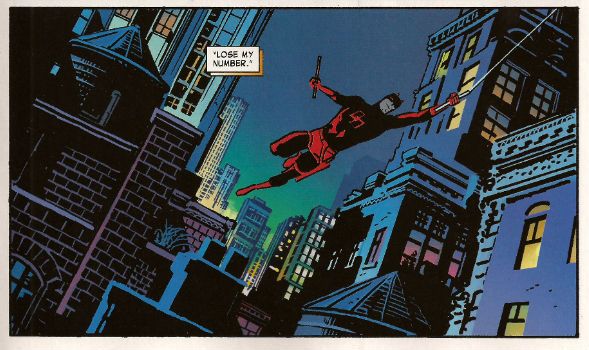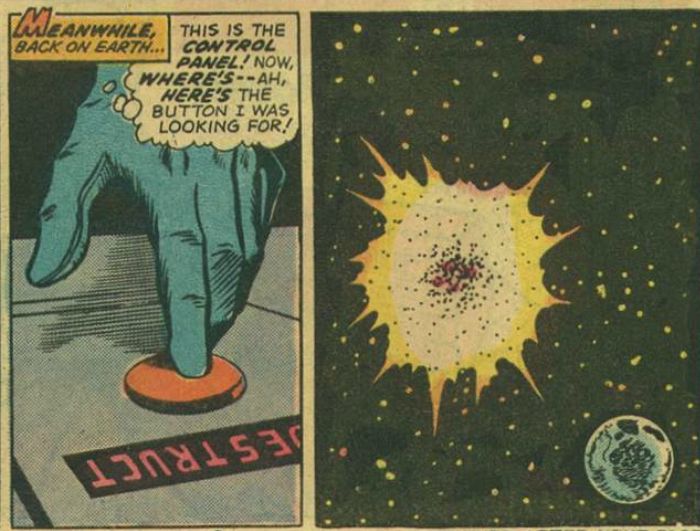Mark Waid has a very thorough post over here on “Print Math” that I think everyone should read.
I started to write this as a response in the comments thread, but then realized it would be quite a bit longer than a comments thread response should probably be, and, anyway, would almost certainly be down at response #80 or something by the time I finished writing it, so I thought it better to dance the dance over here, below the cut.
Let me say a few things up front so that there’s absolutely no confusion of any kind (though I imagine someone, somewhere will misinterpret this for the usual “Retails against digital! OOOg!”) – I absolutely and in every way think that creators should explore each and every way to bring their material to market. While I am certainly pro-DM, there is no doubt that the coverage of DM stores is nowhere near as strong as it could or should be, and that digital is certainly one of many tools that is available, and should absolutely be pursued.
Mark should be commended for getting out in front of this debate, and for trying to provide a real and solid basis of his perceptions of the market and the possibilities for the future. I strongly want to urge Mark to continue the blog posts on the subject, because more clarity can not help but be good for everyone.
(I’d also like to use this chance to apologize to Mark for being a techno weenie and running Firefox with just about everything turned off that can be turned off – I never ever see ads on the internet, for example – which includes virtually all scripts, and which I keep forgetting to turn back on when I comment at Mark’s site, which means my comments keep getting put into moderation, and he’s got to manually pull them out, which I am sure is a pain in his ass)
Mark, as I said, makes some wise points cogently, but I’m sorry to say that I think that several of the base assumptions that he makes about the market (both in function and size) are fairly drastically off.
The first place to begin, I think, is in access to the market – to any market.
I’ve been struggling with this thought for days, but I think I’ve come to the final realization that gatekeepers on a market are not inherently a bad thing. We all know Sturgeon’s Law (well, really Sturgeon’s Revelation, but that’s neither here nor there): “90% of everything is crud”, but I think that my personal Revelation is that in the absence of Gatekeeper’s trying to weed out the silk from the dross, that number really more properly becomes 99.999%. Have you read any of the horrific and mangled prose that people have out in the iBooks store? I’ve read a few, and, golly, much of what I’ve read is nowhere near professional quality.
More to my own point, as a guy who owns a comic book store I get a whole lot of samples and pitches from wannabe creators. Many of whom who have done print of demand (POD) comics and are usually trying to flog them outside of the traditional distribution system – either because they’ve been rejected, or would be rejected, by Diamond for distribution. I see a LOT of comics, and virtually all of them are NOT ready for primetime. Most of them are juvenile, poorly done, and just look or feel amateur.
There’s another hard truth about creative works that usually goes unspoken, and that’s that the creator is, generally, their own least reliable critic. In the comment thread linked above there’s an established creator who is lamenting what was poor sales on a particular release, and it took every single ounce of willpower I possessed to not post that the reason was actually because the work was a steaming pile of shit. That I took a chance on his comic, sold less than 10% of what I ordered because it was ludicrous, ugly, poorly plotted and motivated, and so on.
Comic book retailers really really like selling comics. It’s sort of what we do. For a living and everything. We all want to sell more comics. We all take chances on many things and try to find out what the floor and the ceiling for any individual work might be, if we think it is even REMOTELY commercial. And, if you have a comic that is sitting at issue #20 or something, and you’re only selling 5k copies, I have to tell you: that’s on you, not on the market for failing to recognize the flower of your genius.
Oh, sure, there are a few exceptions here and there, but that’s what they are: exceptions.
There was a point when Diamond, the big bad monopoly that they are, pretty much let almost any piece of crap come to market (I think mostly because they were concerned about being labeled as the monopoly), and what happened? The catalog swelled, sales collapsed, and suddenly they’re distributing hundreds of utterly unprofitable comics that simply didn’t have any commercial potential of any kind.
Even today I have to say I can easily think of at least 5 publishers who truly don’t deserve the privilege of access to the market, because in multiple years of publishing, they’ve never come close to publishing something of lasting value.
I’m not saying this to be a dick; I’m saying it because it happens to be true. (If it was to be a dick, I’d be NAMING them)
*I* think one of the biggest flaws with the current system is that Diamond done signed themselves a contract which basically says the premier publishers can do whatever the fuck they want with little to no consequences – What we really need is a distribution system that says: “new 52? Um, sure, if you feel like you must, but we’ve only got 16 catalog pages for you DC, and, frankly, we’re going to list Mr Terrific in a single line of 8 point text” – the worst thing that ever happened was Marvel and DC, et al being able to design their own catalog pages, with no real restrictions of any kind.
(Also? Diamond's only sorta a monopoly -- because DIAMOND has NO DIRECT CONTROL over roughly 85% of the volume of product it distributes. DC Comics can insist that every issue of JUSTICE LEAGUE comes packed with a literal sack of shit, and Diamond has very little option than to pack that shit. Diamond is AT LEAST as yoked by the terms of the deal as any given small publisher, believe it or not. Probably more, because they're not, AFAICT, paid enough now to offset the tightness of that particular leash.)
Anyway, I’m dropping down a rabbit hole with this, can we go back to my long held notion that you are now competing against Watchmen and Dark Knight and Kingdom Come and (insert awesome, and awesome selling work here) – being “OK” is no longer good enough (if it ever was) to get you catalog and rack space if you’re not a publisher who can FORCE your work to be carried. You really do need to be exceptional. Most of the available consumer purchasing dollars are being soaked up by the Big Two, largely through overproduction.
At the end of the day, I think barriers to gain access to a market are (if they are reasonable barriers) not at all a bad thing – and, let’s be realistic, the barriers to NATIONAL DISTRIBUTION to a NETWORK OF SPECIALIZED STORES are, realistically, EXTREMELY low in comics. It’s certainly easier to gain nationwide distribution into retail for an unknown and untested comic book, than it is for a new print book, or a music recording, or a film. Like, 1000 times easier!
Let’s talk about books, because at least the book world is a little more transparent about how things work (I’ve spent hours googling music and film, and can barely understand most of what I’ve found… which is little) – I thought this post about the realities of the book business was sobering, especially when you consider that books are RETURNABLE and comics (generally) are not… what that means is that no comics publisher ever, anywhere ever has to ship an UNPROFITABLE comic book, whereas publishing a book is an extraordinary risk, one that you don’t even know if you’ve won or lost until many months later!
Anyway, you think Waid's math is sobering? Try this:
“Here’s the reality of the book industry: in 2004, 950,000 titles out of the 1.2 million tracked by Nielsen Bookscan sold fewer than 99 copies. Another 200,000 sold fewer than 1,000 copies. Only 25,000 sold more than 5,000 copies. The average book in America sells about 500 copies” (Publishers Weekly, July 17, 2006). And average sales have since fallen much more. According to BookScan, which tracks most bookstore, online, and other retail sales of books, only 299 million books were sold in 2008 in the U.S. in all adult nonfiction categories combined. The average U.S. book is now selling less than 250 copies per year and less than 3,000 copies over its lifetime.
Now, this is utterly putting aside that BookScan is NOT 100% of book sales, of course, and also, as was pointed out by Justin Jordan in Waid's thread, the other difference between books and comics is that a best-selling book can sell multiple millions in a few short months, while the top comic will likely top out at a tenth of that, so the theoretical payoff for successful prose is much much higher, but, even with all of that.
I can't find anything similar for film or music, and, really, the best I can muster is an implication from this chart. I think (if I understand things correctly), that the "unrated" films are movies that are not distributed with MPAA ratings, and thus, are, generally, not being distributed by one of the large dominant studios that would be roughly equivalent with Marvel, DC, all the way down to a Boom!-sized houses -- a small number of firms which control the absolute majority of distribution. So, those 2279 released films? (roughly a quarter of the total) *They* only made an average of $773k per film. So, how many of those movies earned their costs back? Few, if any?
But the point that I want to make, again, is that no comics publisher ever need ship an unprofitable comic -- these are firm sales, and, in fact, it at least has been entirely possible in the past to go to a printer with a Diamond PO, and an assignment of payment, and to not actual front ANY upfront cash in order to print and distribute your comic!
So, yeah, even with all of Diamond's faults (and they are really myriad), I barely find them hard gatekeepers for the market. In fact, if I were to level a real criticism at Diamond's Purchasing department is that they need to hire a bunch of 20 year olds with broader taste and then back up that initial inventory acceptance with aggressive purchase orders and to-retailer marketing. Diamond's never really had a proper equivalence to what Capital City would do with "Certified Cool", where CCD actually stood behind the product.
That's the first bit.
The second bit is Waid's printing costs analysis. His math is based on color printing, which has never been essential to self-published or truly small press books. Certainly, it has no long-term impact on the "real world" success or failure of a work, as we can clearly see with the Success of Manga, and MAUS, and WALKING DEAD, and FUN HOME and PERSEPOLIS (etc etc etc) out among the Mass audience.
Waid kind of just waves away black & white printing with a "You’d be surprised how little that lowers the cost." and without backing that up, but I've been told that in the past that lowers printing costs anywhere up to 40% -- I have no idea if that's still true, however -- and, of course, that's one less potential creator to pay (or, "job to do", depending on the creative set-up)
The third, and final bit is Waid's comments about the DM retail community.
So, let's put aside the hyperbole (because it looks like there is a place to buy comics in Tupelo, Mississippi, and there's at least three stores within something like a half-hour drive of Pratville, Alabama, in Montgomery) -- sure, there's no doubt it is more difficult to find adequate access to comics the further you get from dense population bases. It's also harder to find stores that stock ANY number of other things that don't appeal to a mass audience. That's kind of how supply and demand works.
What I don't know is whether or not there are actually huge audiences out there just waiting, under-served. I actually wonder if anyone has ever done an analysis of sales of Jazz or Poetry or Indie Films or whatever other clever-but-niche media, pre- and post-internet/Amazon/Digital to see if there's any significant lifting of sales in non-mass things when there suddenly no geographic barrier whatsoever in purchasing them. I suspect strongly the answer would have to be "No", because it's often the availability of object in a community in the first place that creates the demand for more of it. If you're not exposed to Jazz (or comics!), why would you ever begin to think you should seek out more? I actually find the internet to be self-reinforcing in terms of interests -- while free things can pass virally, I can't think of an example of a PAID object that has done so to a wider customer base that wasn't ALREADY INCLINED to already want it (so, no, the Louis CK example fails -- in fact, it's probably a smaller audience than he would have had on HBO or Comedy Central or whatever).
Either way, this has always been the truth in brick and mortar comic shops -- 75% of the eventual customer base of a new store ultimately is formed of new-to-comics customers.
To put this another way: while I do think that SOME "entirely new to comics" customers will inevitably be created in the digital space, you're going to need to work really hard to convince me that this will be a truly significant number, worthy of minimizing print for.
Because, one of my largest concerns, as a print retailer can be maybe summed up by this article. The author discusses living in NYC (an area with many many excellent stores), and switching to digital, and how he'll "always go back [to Midtown comics], at least for a look." and I thought, "Well, no, if enough people do that, then Midtown comics won't be there for ANYONE, will it?", which is why retailers kind of cringe when creators stride forward with at least implied statements about why they think digital is better.
Mark "complains" that the number of stores stocking any given work is low, and aye, almost always that is true. Yet, the REASON it is true is not because the retailer is cruel, but because the CONSUMER AUDIENCE IS NOT THERE.
Let's take INCORRUPTIBLE, for our example, because Mark used it as well. The most recent issue, #27, which came out six weeks ago, has only sold two copies at Comix Experience, so far, one of those to a preorder. There's one more sub copy sitting in the store, unbought so far, but it is safe to say I will ultimately sell it, bringing the total to three copies. Keep in mind that I brought in five, which means I'm almost certainly going to lose money on #27 (though that's my own fault because I misread the stronger sales on #25 as being permanent)
I've never once sold 100% out of an issue of INCORRUPTIBLE in less than 45 days, and the most I've ever sold of a single issue was 10 copies of #1 (on 12 ordered). It's just been a very slow leak over the last 2+ years until I'm down to 3 copies sold.
And I'm a reasonable sized store (#2, I think, in volume) in a major metropolitan market, and I can't shift four copies with a subscriber base of 125, and a stores that handles at least 1000 transactions a month, and yet there's an expectation that it's somehow wrong that a store in Tupelo, MS doesn't carry the book in the first place? That hardly sounds rational. It sounds more to me like the natural market response to a product that is aimed at a niche segment (people who want non-Marvel/DC versions of...) of a niche genre (...superheroes...) of a niche medium (...comics) and, as such, you should actually be THRILLED that as many as 500 stores carry it.
I've written elsewhere that you might want to think about comics in relationship to poetry. I have to imagine that poets and poetry fans would be ECSTATIC if there was a nationwide network (even with less outlets in Alabama than on a coast) of poetry stores that specialized in poetry and were passionate advocates for it. I'm further fairly certain that despite the many options for delivering poetry digitally, the overall economic market for poetry isn't going to explode because "everyone" (ha) has an internet connection, and thus, can access poetry. I'm even willing to predict that the ease of digital posting of poetry is going to lead to much more doggerel, more than anything of lasting value that is providing a living wage for more than a tiny handful of poetry creators.
Now substitute "Comics" for "poetry" above, and you'll see why I think we've actually got a fairly reasonable (but by NO MEANS "perfect"!) system of distribution in this country?
As far as I know, there are numerous studies that show that having the goods on display in a showroom ends up selling more goods -- here's just one example of that.
Mark's Print Math shows that for $5k and the cost of a pen and paper, you've got a fairly reasonable shot at NATIONAL distribution to a network of dedicated stores that actually give a damn about the product they sell. How many media can legitimately say that? And we're casting these things as negatives?
Can it be better? Damn right it can be better! But that doesn't make the system without a strong set of clear positives.
In the end, my fear, like I said, is in that Kotaku column I linked to above -- that JUST enough people will move laterally to digital that print WILL collapse, and then it won't be economically feasible for the print OR digital versions of most of the goods we all love to be produced. Especially if you've convinced the world that (*snort*) 99 cents is the price point to be.
I could probably go on, but we're at , jeez, I'm told 3.2k words already, and I wasn't even smart enough to package this as a Tilting, and get paid for it....
(Hey, it's the entire problem with digital, right there, isn't it?)
-B
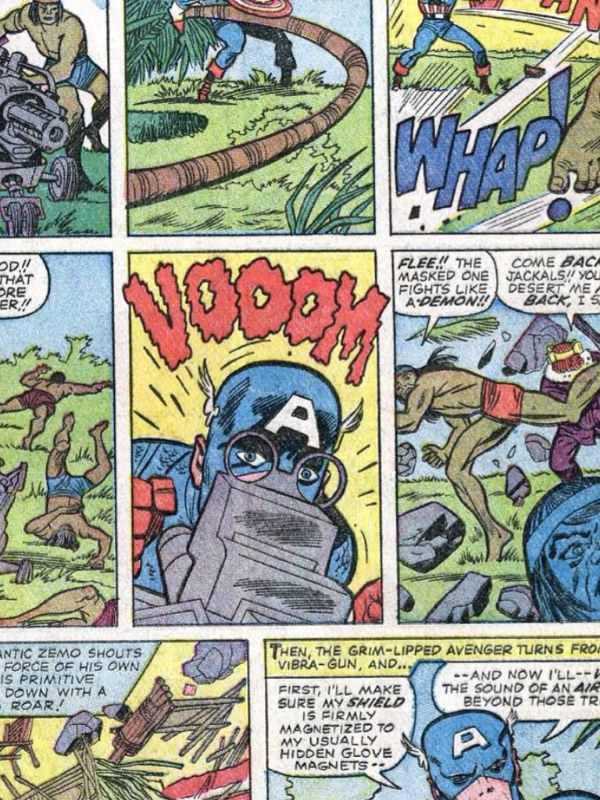 1:22:41-1:27:48: The first twenty-five issues of Avengers! Graeme and Jeff are endeavoring to read the first 300 issues this year and talk about them: good luck on that one, since (a) our disagreements start from literally the first issue, and (b) if there are more stretches like that first twenty-five issues, then…whew. Anyway, in there Graeme starts cutting out a little bit so we have…
1:27:48-1:28:10: INTERMISSION ONE! Man, I kind of missed these. I really have to rope Graeme into doing more music for the show.
1:28:10-2:06:45: And we’re back! And Graeme’s not cutting out anymore! And Jeff no longer sounds like one of those omnipotent threats from the first series of Star Trek! Yay, technology!! Technology can’t help where the first twenty-five issues of Avengers are concerned, though: so we have to talk about their slapdash charms (or pseudo-charms, to be honest). Of particular interest: Stan Lee’s handling of Captain America, the difference between the original team and the new team, celebrity fan letters,
1:22:41-1:27:48: The first twenty-five issues of Avengers! Graeme and Jeff are endeavoring to read the first 300 issues this year and talk about them: good luck on that one, since (a) our disagreements start from literally the first issue, and (b) if there are more stretches like that first twenty-five issues, then…whew. Anyway, in there Graeme starts cutting out a little bit so we have…
1:27:48-1:28:10: INTERMISSION ONE! Man, I kind of missed these. I really have to rope Graeme into doing more music for the show.
1:28:10-2:06:45: And we’re back! And Graeme’s not cutting out anymore! And Jeff no longer sounds like one of those omnipotent threats from the first series of Star Trek! Yay, technology!! Technology can’t help where the first twenty-five issues of Avengers are concerned, though: so we have to talk about their slapdash charms (or pseudo-charms, to be honest). Of particular interest: Stan Lee’s handling of Captain America, the difference between the original team and the new team, celebrity fan letters,

